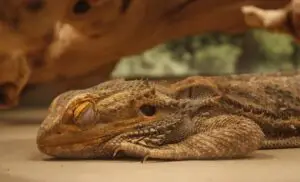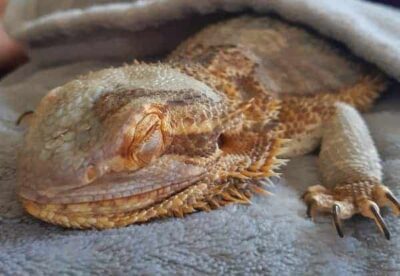Discovering a distressed lizard in need of help can be a heart-wrenching experience. Whether due to injury, illness, or environmental factors, witnessing a lizard in distress can spur a desire to intervene and offer assistance.
In this guide, we’ll explore effective strategies and compassionate approaches on how to save a lizard when it is dying. From initial assessment to providing essential care, understanding these steps can make a significant difference in the life of a struggling lizard.
Why it’s important to help a dying lizard

Helping a dying lizard is important for several reasons. Firstly, it aligns with principles of compassion and empathy towards other living beings. Just as we would want assistance if we were in distress, extending aid to a dying lizard reflects our ethical responsibility to alleviate suffering where possible.
Moreover, intervening to save a dying lizard can contribute to the preservation of biodiversity. Lizards play vital roles in ecosystems as predators, prey, and seed dispersers. By helping to maintain lizard populations, we indirectly support the balance of various ecological processes.
Additionally, taking action to save a dying lizard fosters a sense of stewardship towards nature. It reinforces the idea that humans are not separate from the environment but rather interconnected with all living organisms. By caring for individual lizards, we demonstrate our commitment to the well-being of the broader natural world.
Finally, assisting a dying lizard offers a learning opportunity. Observing and understanding the reasons behind the lizard’s decline can provide insights into environmental health and potential threats to wildlife. This knowledge can inform conservation efforts and aid in mitigating future risks to lizard populations.
Signs of a Dying Lizard
Recognizing the signs of a dying lizard is crucial for providing timely assistance. Here are some common indicators to watch for:
- Lethargy: A dying lizard may appear unusually inactive or lethargic. It may spend more time than usual resting or lying still.
- Loss of Appetite: A significant decrease in appetite or a refusal to eat can signal underlying health issues. This is especially concerning if it persists over several days.
- Difficulty Breathing: Labored breathing, wheezing, or open-mouthed breathing are signs of respiratory distress and should be addressed promptly.
- Dehydration: Sunken eyes, wrinkled skin, or a lack of skin elasticity can indicate dehydration, which can be life-threatening if not treated promptly.
- Weakness or Tremors: Lizards experiencing weakness, trembling, or difficulty moving may be nearing the end of their life.
- Changes in Color: A drastic change in color, such as darkening or paleness, can indicate stress, illness, or injury.
- Visible Injuries: Wounds, lesions, or other visible injuries may require immediate attention to prevent infection or further complications.
- Unusual Posture or Behavior: Abnormal posture, such as laying flat on the ground or being unable to support its body weight, along with unusual behaviors, may indicate distress.
- Loss of Coordination: Lizards that have trouble coordinating their movements or appear disoriented may be experiencing neurological issues or organ failure.
- Foul Odor: A foul or unusual odor emanating from the lizard’s body could indicate infection or necrosis.
If you notice any of these signs in a lizard, it’s essential to seek veterinary care or consult with a reptile specialist as soon as possible. Prompt intervention can improve the chances of saving the lizard’s life or at least alleviate its suffering.


